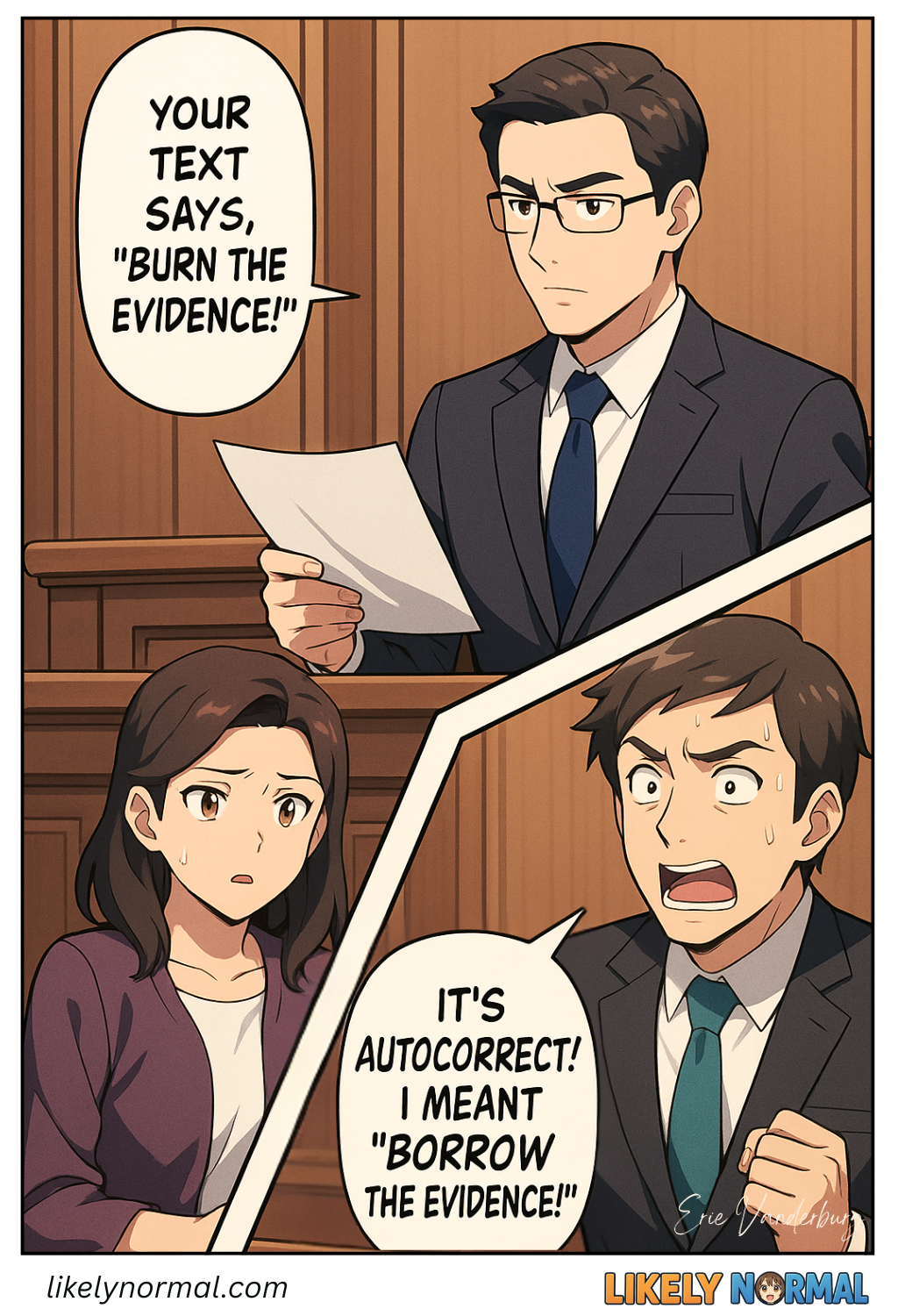Autocorrect Evidence
Autocorrect is like a well-meaning but overzealous assistant who just can’t resist improving your messages—often with hilarious (or disastrous) results. It’s that friend who insists they know what you’re trying to say better than you do, even when they’re spectacularly wrong.
You carefully type, “Let’s meet for coffee,” only to have autocorrect declare, “Let’s meat for cough.” Suddenly, your casual invitation sounds like a medical consultation at a butcher shop. And heaven help you if you’re in a hurry—your promise to “bring the snacks” becomes “bring the snakes,” turning your picnic into an adventure no one signed up for.
The real magic of autocorrect is its ability to make the mundane surreal. Shopping lists become abstract poetry (“bread, milk, existential dread”), work emails gain unexpected drama (“Please find the attached goat” instead of “document”), and simple compliments take bizarre turns (“Your hair looks inflatable today!”).
What’s most impressive is autocorrect’s stubbornness. It will fight you endlessly over your most commonly used words, clinging to its belief that you must have meant “duck” instead of “deck”—even if you’ve never once discussed waterfowl in your texts. Meanwhile, it happily invents new words on the fly, leaving recipients to wonder if “sporkle” is tech jargon or just your autocorrect having an identity crisis.
The ultimate irony? The more you rely on autocorrect, the more you find yourself manually correcting autocorrect. It’s a digital ouroboros—a snake eating its own tail, much like how autocorrect turns “auto” into “avocado” given half a chance.
So the next time your phone “helpfully” suggests “I love yiu” instead of “I love you,” just remember: autocorrect isn’t wrong, it’s just… creatively interpreting your life. And if all else fails, there’s always the classic fallback: “Sorry, blame autocorrect.”

Discussion ¬